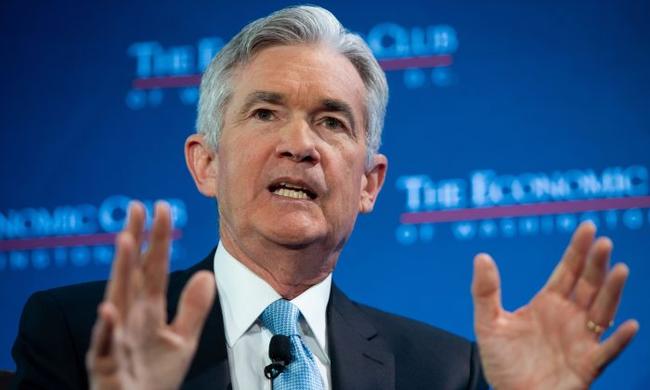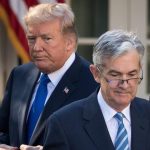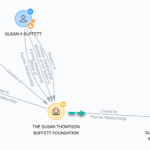Authored by James Gorrie via The Epoch Times,
The Federal Reserve will be adding assets to its balance sheet again, but Powell insists it’s not “quantitative easing”…
Apparently, the “repo market” purchases by the Federal Reserve we discussed earlier this week —which don’t count as quantitative easing (QE)—were just the beginning of the new, non-quantitative easing but money printing period.
Fed “repos,” you may recall, are now necessary to boost weak overnight liquidity reserves of the big banks and don’t permanently expand the Fed’s balance sheet, unless they go on forever, in which case they would be QE. Now they are more of a short-term bail-out.
It’s Time for “Non-Quantitative Easing”
But in his Tuesday speech, Federal Reserve Chairman Jerome Powell explained that for the first time in five years, the “time is now upon us” for the Fed to resume buying U.S Treasury bills and bonds. That means that come November, the American economy will officially enter into another period of quantitative easing, you know, the Fed buying assets to expand its balance sheet.
Or not.
Typically, when the Federal Reserve buys Treasury assets, it’s because of weakness, either in the economy or in the financial system. A weakness that needs to be papered over by money printing, expanding the Fed’s balance sheet and bank reserves. Or the Fed buys other assets that nobody wants to buy at a decent price, like the purchases of mortgage backed securities (MBS) it conducted after the financial crisis.
Not so fast, says Powell. He insisted that there are perfectly good reasons, aside from weaknesses in the financial system, for the Federal Reserve to start printing again. And, he noted, even insisted, what the Federal Reserve will soon begin doing again is NOT quantitative easing.
For example, Powell said that the next round of asset purchases won’t really be the same as prior rounds because the rationale this time is to help maintain an appropriate level of reserves in the financial system. In other words, it’s more than just overnight liquidity that needs propping up. The whole financial system is running low on liquidity.
Almost as telling as the restart of the “non-quantitative easing” program is the way Powell engaged in semantic gymnastics to minimize and avoid using the term, or even evoke comparisons of the same. One would hope he did so for more than just the sake of ambiguity.
This Is QE
Just to clarify to our readers, this is what he is (not) talking about.
The Fed has the power to literally print money, either in paper or electronic form. Both currency in circulation (paper) and reserves held at the Fed (bits and bytes) count as “base money,” of which banks need to hold a certain amount to satisfy regulatory requirements. They hold this either in their vaults (paper) or at the Fed (bits and bytes.) Since the Fed is the source of both paper and electronic money, it is counted as a liability on the Fed’s balance sheet.
But the Fed can’t just print that paper or bytes and give them to the banks without making another entry on the asset side of its balance sheet, which backs the currency the Fed prints. This is where the concept of asset purchases comes in because banks usually sell Treasury bonds (assets) to the Fed in exchange for the newly printed money. But it’s not just that, the Fed also has bought MBS before, as explained above, or holds other assets on its balance sheet, like gold, which it could also buy, but doesn’t want to
This is what the last round of QE looked like. Banks bought Treasuries from the Federal Government and the flipped it to the Fed in exchange for newly printed mostly electronic reserves. The Treasuries stayed on the Fed balance sheet permanently, hence the name permanent open market operations, and the whole balance sheet ballooned to around $4.5 trillion, whereas it was a few hundred billion before the crisis.
So anytime the Fed either directly or indirectly buys assets and holds them for longer period of time, this is money printing. Actually already the old QE term was already an obfuscation to lead people away from thinking the Fed is just printing money plain and simple.
In addition, this process also monetizes federal government debt, another no-no in orthodox monetary theory.
Only Good Economic News?
To bolster his point, Powell went on to note that although the short-term yield curve needs to be closely watched, vulnerabilities in the financial system remain moderate overall. He also said that continued economic expansion, a strong labor market and inflation near the Fed’s two percent target is the most likely outlook for the economy. In short, Powell sees no reason why economic expansion can’t continue.
But what about those weak reserve levels? What does that really mean for the health of the banking system and the overall health of the economy?
Powell reiterated that asset purchases for reserve building purposes should not be confused with quantitative easing, although quantitative easing does exactly that: build bank reserves and monetize government debt.
It is totally irrelevant as to why the Fed would think the banking system needs more reserves, or why it would think it needs to print more money. Money printing is money printing it doesn’t matter why you do it.
Getting Beyond the Word Games
But perhaps we should get beyond the word games.
Powell rightly pointed out that while the U.S. trade war with China, political unrest in the far East and political gridlock in the West as well as an overall cooling of the global economy are all relatively bad news. But overall U.S. economic figures are relatively strong. That’s true. The U.S. economy looks better than most in the world.
Powell also pointed out that new aspects of the economy, specifically in the digital economy, are not always accurately measured or understood as clearly as they need to be and thus could be providing “goods” the old statistics don’t capure.
That’s true as well. So why are we restarting that quantitative easing program again we last needed to keep the financial system from completely collapsing if the economy is doing so well? And why does Powell balk at calling the Fed’s new asset purchase policy quantitative easing?
The answer to the first question would appear to be that Powell is being proactive. The global economic slowdown combined with the record-breaking levels of new debt being issued by the federal government need enough dollars to keep the money flowing smoothly. Adding more debt than there is base money (bank reserves) or market willingness to buy is a recipe for failure.
Secondly, quantitative easing is a term loaded with negativity. Unlike political candidates on the left, Powell is wary about jawboning the economy into recession. He weighed his words carefully on Tuesday, if not entirely honestly.
Related to that, Powell is making a false distinction between liquidity weakness in the banking system and current economic strength. For the moment, such a distinction is possible but not plausible. Just as a fire at the bottom of a hill may be, for the moment, distinguishable from houses at the top, it’s possible but not plausible to separate the two in terms of threat and consequences. In both cases, the threats are real with predictable outcomes.
Quantitative Easing by any Other Name
Powell’s insistence to not refer to the Federal Reserve buying assets as not quantitative easing stretches the limits of credulity. At the same time, there is some merit to what he is doing. The Fed, after all, seems to want to act to prevent things falling apart and not react too late like it did the last time around.
Given those realities, Powell seems to be doing what he can to shape the viewpoint of the world, manage expectations, and keep the U.S. economy running. As he noted in his talk, “our job is to keep it there as long as possible.”
Considering the alternatives, this attitude might not be a bad thing, although the Fed is slowly but surely running out of credibility to sell to the markets.











